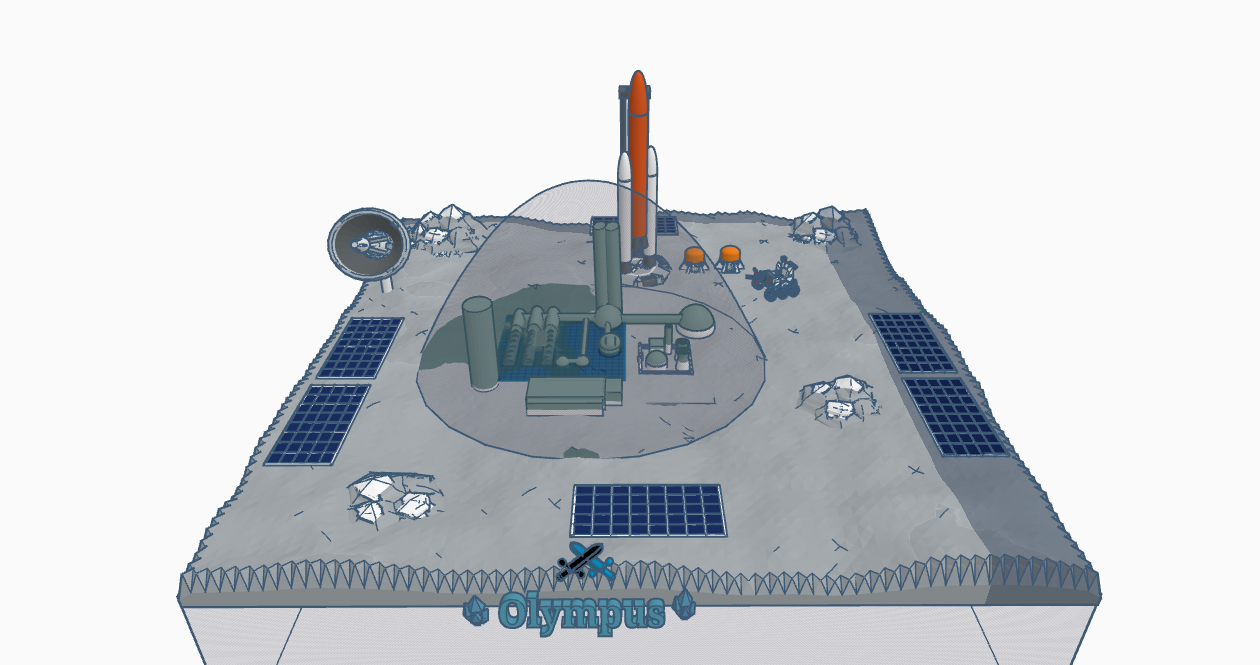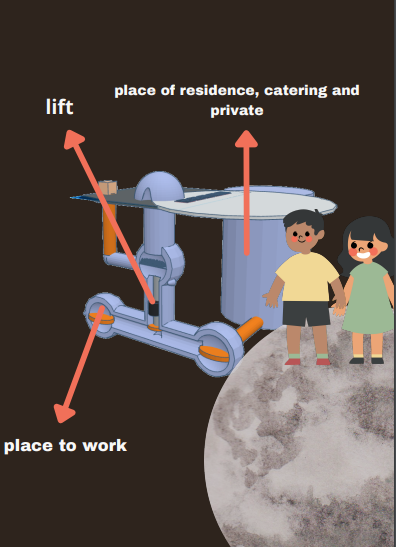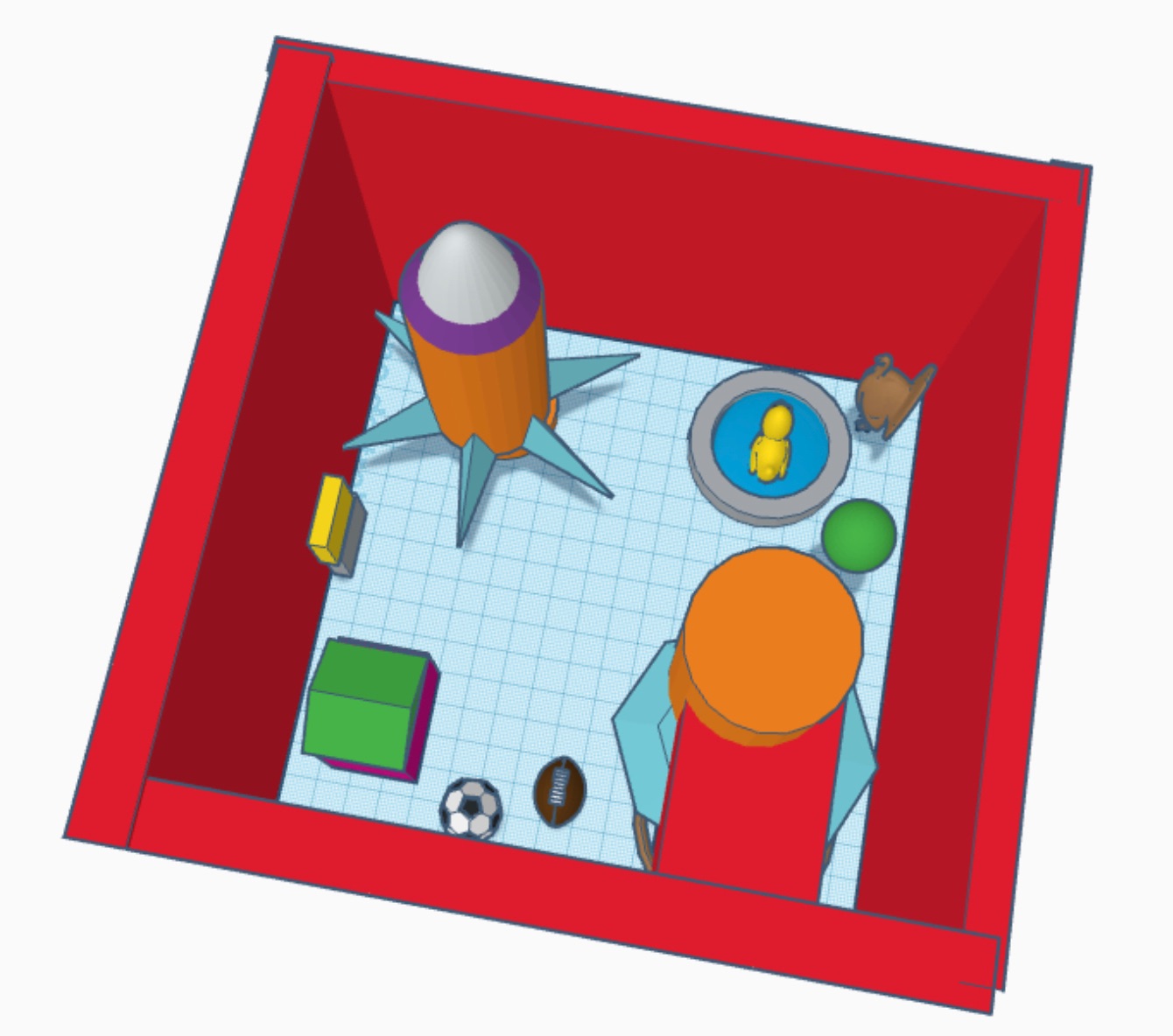|
Project description
Through a project of the DLR-School Lab, we learned about the Moon Camp Challenge. Within a
week we planned and constructed our Moon Camp. On the first two days we conducted various
experiments. Among other things, experiments on astrobotany, rockets, electricity and power
reserve, but also virtual reality. In the following three days we started to deal with the program
Tinkercad and to create our own Moon Camp on the computer. We got along very well with the
Tinkercad program right from the start. At the beginning we still had difficulties, but we quickly
created a good relationship with each other in our group and mastered the tasks as a good team.
|
|
Where do you want to build your Moon Camp?
Close to the lunar poles
Why did you choose this location?
We chose the South Pole because there is ice there that can be turned into water. Shackleton
Crater is located near the South Pole. In addition, some peaks at the crater rim are exposed to
constant solar radiation. Solar panels could be built there in order to be constantly supplied with
electricity. The moon’s lava tubes provide protection from radiation and micro-meteorites, and they
are larger than on Earth. The underground rooms could be moved into the lava tubes. The cooled
lava rock also offers building material.
How do you plan to build your Mooncamp? Which materials will you use?
We have planned our moon camp above and below the lunar surface. We have moved the
underground rooms in lava tubes, as they form a protection against radiation and micro-meteorites.
Below the lunar surface are, for example, the bedrooms, the gym, the kitchen and the bathroom.
Above the lunar surface are silos, the nuclear power plant, the observatory, the greenhouses and a
recycling station. For protection, we have erected a protective dome made of special glass in the
outdoor area. For construction we use light material, and we obtain building material by mining rocks
from the lunar surface. Many buildings are also built from inflatable material at the beginning, which
can later be replaced by heavier materials.
|
|
Since there are ice craters on the moon, you can melt the ice and thus gain water. So
the ice would only have to be degraded, then you have to thaw the ice and then filter the water.
|
We get our food from the greenhouses. We have fast-growing plants that provide us with
fresh food every day. In addition, astronaut food is sent up from Earth to the moon. We store the
food in Silos.
|
To gain energy, we have different options. On the one hand, we have built a nuclear power
plant that runs on helium-3, which makes a clean energy supply possible because helium-3 does not
produce nuclear waste. Since we are located at the South Pole, the lunar nights are also shorter,
which is why we have set up solar panels. To store the electricity, we have set up a power reserve
and an electricity storage system above the lunar surface.
|
To get air, we have water split into oxygen and hydrogen. In addition, we have plants in our
greenhouses that perform photosynthesis permanently, as they are supplied with light throughout
the day. You can also split parts of the lunar surface, as oxygen is also contained there. We store the
oxygen in silos for life-sustaining goods.
|
For protection, we have moved many buildings below the lunar surface in lava tubes.
The lava tubes provide protection against radiation and micro-meteorites. Above the lunar surface,
we have built a dome made of special glass that provides protection from radiation and micrometeorites.
|
|
Describe a day on the Moon for one of your Moon Camp astronauts
Our astronaut’s day begins with him waking up, going to the bathroom and preparing for the
day. Then he goes to the kitchen and has breakfast. Today he must repair the radar dish because it
was hit by an asteroid. He goes to the radar dish and repairs it. Then he goes to the greenhouse,
harvests plants and plants new ones. After lunch, he goes to the main headquarters and
communicates with knowledge chatter on Earth. Then he packs a few samples of the moon rock so
they can be sent to Earth. Before dinner, he goes to the gym to work out his muscles. After that, he
goes to bed.
|







